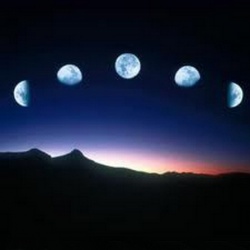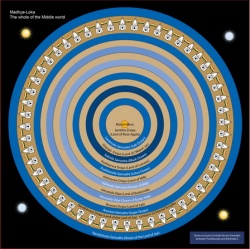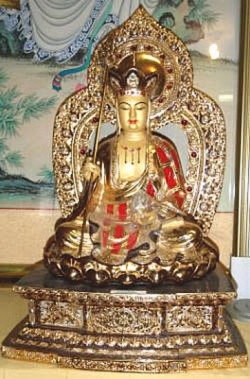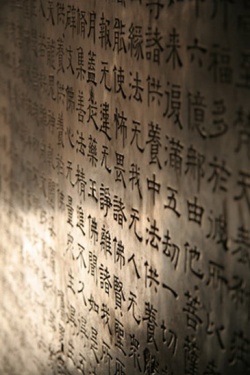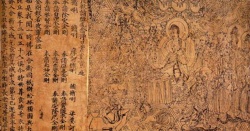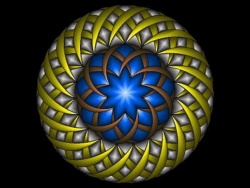Jyotisha – Hindu Astrology
Jyotisha (jyótis- “light, heavenly body”) is the traditional Hindu system of astronomy and astrology. Also known as Hindu astrology, more recently Vedic astrology, It has three branches:
Siddhānta: Indian astronomy.
Saṁhitā: Mundane astrology, predicting important events related to countries such as war, earthquakes, political events, financial positions, electional astrology, house and construction related matters (Vāstu Śāstra), animals, portents, omens, and so on.
Horā: Predictive astrology in detail.
The foundation of Hindu astrology is the notion of bandhu of the Vedas (scriptures), which is the connection between the microcosm and the macrocosm. Practice relies primarily on the sidereal zodiac, which is different from the tropical zodiac used in Western (Hellenistic) astrology in that an ayanāṁśa adjustment is made for the gradual precession of the vernal equinox. Hindu astrology includes several nuanced sub-systems of interpretation and prediction with elements not found in Hellenistic astrology, such as its system of lunar mansions (Nakṣatra).
Astrology remains an important facet in the lives of many Hindus. In Hindu culture, newborns are traditionally named based on their jyotiṣa charts, and astrological concepts are pervasive in the organization of the calendar and holidays as well as in many areas of life, such as in making decisions made about marriage, opening a new business, and moving into a new home.
Astrology retains a position among the sciences in modern India. Following a judgement of the Andhra Pradesh High Court in 2001, some Indian universities offer advanced degrees in astrology.
The term Hindu astrology had been in use as the English equivalent of Jyotiṣa since the early 19th century. Vedic astrology is a relatively recent term, entering common usage in the 1980s with self-help publications on Āyurveda or Yoga. The qualifier “Vedic” is however something of a misnomer, as there is no mention of Jyotiṣa in the Vedas.
Historical documentation suggests horoscopic astrology in the Indian subcontinent was a Hellenic influence post-dating the Vedic period. However, an authoritative work on Jyotish called the Bṛhat Parāśara Horāśāstra is said to be spoken by Sage Parashara who existed before the Hellenic Period and contributed to Rigveda.
History
Jyotiṣa is one of the Vedāṅga, the six auxiliary disciplines used to support Vedic rituals. Early jyotiṣa is concerned with the preparation of a calendar to fix the date of sacrificial rituals. Nothing is written on planets. There are mentions of eclipse causing “demons” in the Atharvaveda and Chāndogya Upaniṣad, the Chāndogya mentioning Rāhu. In fact the term graha, which is now taken to mean planet, originally meant demon. The Rigveda mentions an eclipse causing demon, Svarbhānu, however the specific term of “graha” becomes applied to Svarbhānu in the later Mahābhārata and Rāmāyaṇa.
It is only after the Greek settlement in Bactria (third century BC) that explicit references to planets are attested in Sanskrit texts. It was only after the transmission of Hellenistic astrology that the order of planets in India was fixed in that of the seven-day week. Hellenstic astrology and astronomy also transmitted the twelve zodiacal signs beginning with Aries and the twelve astrological places beginning with the ascendant. The first evidence of the introduction of Greek astrology to India is the Yavanajātaka which dates to the early centuries CE.
The Yavanajātaka (“Sayings of the Greeks”) was translated from Greek to Sanskrit by Yavaneśvara during the 2nd century CE, under the patronage of the Western Satrap Saka king Rudradaman I, and is considered the first Indian astrological treatise in the Sanskrit language. However the only version that survives is the later verse version of Sphujidhvaja which dates to AD 270. It is interesting to note that Indian astronomy preserved some of the older pre-Ptolemaic elements of Greek astronomy.
The main texts upon which classical Indian astrology is based are early medieval compilations, notably the Bṛhat Parāśara Horāśāstra, and Sārāvalī by Kalyāṇavarma. The Horāshastra is a composite work of 71 chapters, of which the first part (chapters 1–51) dates to the 7th to early 8th centuries and the second part (chapters 52–71) to the later 8th century. The Sārāvalī likewise dates to around 800 CE.
Elements
1. Varga – divisions
There are sixteen Varga (‘parts, divisions’) charts used in Hindu astrology. See https://en.wikipedia.org/wiki/Varga_(astrology).
2. Rāśi – zodiacal signs
The Nirayana (sidereal zodiac) is an imaginary belt of 360 degrees, which, like the Sāyana (tropical zodiac) is divided into 12 equal parts. Each twelfth part (of 30 degrees) is called a sign or rāśi (‘part’).
Vedic (Jyotiṣa) and Western zodiacs differ in the method of measurement. While synchronically, the two systems are identical, Jyotiṣa uses primarily the sidereal zodiac (in which stars are considered to be the fixed background against which the motion of the planets is measured), whereas most Western astrology uses the tropical zodiac (the motion of the planets is measured against the position of the Sun on the Spring equinox).
This difference becomes noticeable over time. After two millennia, as a result of the precession of the equinoxes, the origin of the ecliptic longitude has shifted by about 22 degrees. As a result the placement of planets in the Jyotiṣa system is consistent with the actual zodiac, while in western astrology the planets fall into the following sign, as compared to their placement in the sidereal zodiac, about two thirds of the time.
3. Nakṣatras – lunar mansions
A Nakshatra or lunar mansion is one of the 27 divisions of the sky, identified by the prominent star(s) in them, used in Hindu astrology.
Historical Hindu astrology enumerated either 27 or 28 nakṣatras. Today, popular usage favours a rigid system of 27 nakṣatras covering 13°20’ of the ecliptic each. The missing 28th nakshatra is Abhijeeta. Each nakṣatra is divided into quarters or padas of 3°20.
Of the greatest importance is the Abhiśeka Nakṣatra which is the King amongst all the Nakṣatras and worshipping and propitiating this Nakṣatra has the power to remedy all the other Nakṣatras. Remedial measures are in general the high-water mark of all realistic predictive astrology work and go a long way in mitigating Karma.
4. Daśā-s – planetary periods
The word Dasha (‘planetary period’) means ‘state of being’ and therefore the Daśā governs to a large extent the state of being of a person. The Daśā system shows which planets may be said to have become particularly active during the period of the Daśā. The ruling planet (the Daśānātha or ‘lord of the Daśā’) eclipses the mind of the native, compelling him or her to act as per the nature of the planet.
There are several dasha systems, each with its own utility and area of application. There are Daśās of Grahas (planets) as well as Daśās of the Rāśis (signs). The primary system used by astrologers is the Viṁśottarī Daśā system, which has been considered universally applicable in the Kaliyuga to all horoscopes.
The first Mahā-Daśā is determined by the position of the natal Moon in a given Nakṣatra. The lord of the Nakṣatra governs the Daśā. Each Mahā-Dāśā is divided into sub-periods called bhuktis, or antar-daśās, which are proportional divisions of the maha-dasa. Further proportional sub-divisions can be made (but error margin based on accuracy of the birth-time grows exponentially). The next sub-division is called pratyantar-daśā, which can in turn be divided into sookshma-antardasa, which can in turn be divided into praana-antardaśā, which can be sub-divided into deha-antardaśā. Such sub-divisions also exist in all other Daśā systems.
5. Grahas – planets
Nine grahas (Navagrahas) are used. Grah means ’seizing, laying hold of, holding’.
The Nine Planets of Jyotiṣa are the forces that capture or eclipse the mind and the decision making of the human being-thus the term ‘Graha’. When the Grahas are active in their Daśās or periodicities they are particularly empowered to direct the affairs of the person or the inanimate being as the case may be. Even otherwise, Grahas are always busy capturing us in some way or other, for better or for worse.
6. Gocharas – transits
The natal chart shows the position of the grahas at the moment of birth. Since that moment, the grahas have continued to move around the zodiac, interacting with the natal chart grahas. This period of interaction is called Gochara (‘transit’).
The study of transits is based not only on the transit of the Moon/ Cañdra, which spans roughly two days, but also the movement of the slightly faster planets such as Mercury/Budha and Venus/ Śukra. The movement of the slower planets Guru, Śani and Rāhu-Ketu is always of considerable import. Astrologers must study the transit of the Daśā lord and must also study transits from various reference points in the horoscope.
7. Yogas – planetary combinations
Yoga (‘union’) is a combination of planets placed in a specific relationship to each other. The word means ‘yoking’ which is a coming together of astrological entities.
It is usually advisable to study the underlying theme behind the Yogas rather than attempting to memorize them. Rāja Yogas are givers of fame, status and authority and are formed typically by the association of lord of Keṅdras/ quadrants when reckoned from the Lagna/ ascendant and lords of the Tṛkoṇa/ trines. The Rājayogas are culminations of the blessings of Viṣṇu and Lakṣmī. Some planets such as Mars for Leo Lagna do not need another Graha so as to create Rājayoga but is capable of suo-moto giving Rājayoga due to its lordship of the 4th Bhāva and the 9th Bhāva from the Lagna, the two being a Keṅdra and Tṛkoṇa Bhāva respectively.
Dhana Yogas are formed due to the association of wealth giving planets such as the Dhaneśa or the 2nd Lord and the Lābheśa or the 11th Lord from the Lagna. Dhana Yogas are also formed due to the auspicious placement of the Dārāpada/ A7 when reckoned from the Ārūḍha Lagna (AL). The combination of the Lagneśa and the Bhāgyeśa also leads to wealth through the Lakṣmī Yoga.
Sanyāsa Yogas are formed due to the placement of four or more Grahas excluding the Sun in a Keṅdra Bhāva from the Lagna.
There are some overarching Yogas in Jyotiṣa such as Amāvasyā Doṣa, Kāla Sarpa Yoga-Kāla Amṛta Yoga and Graha Mālika Yoga which can take precedence over planetary placements in the horoscope.
8. Bhāvas – houses
The Hindu Jātaka, or Birth Chart, is the Bhāva (‘division’) Chakra (‘wheel’), the complete 360° circle of life, divided into houses, and represents our way of enacting the influences in the wheel. Each house has associated kāraka (‘significator’) planets that can alter the interpretation of a particular house. Each Bhāva spans an arc of 30 degrees and therefore there are twelve Bhāvas in any chart of the horoscope.
These are a crucial part of any horoscopic study since the Bhāvas, understood as ‘state of being’ personalize the Rāśis/ Rashis to the native and each Rāśi/ Rashi apart from indicating its true nature reveals its impact on the person based on the Bhāva occupied. The best way to study the various facets of Jyotiṣa is to see their role in chart evaluation of actual persons and how these are construed.
9. Dṛṣṭis – aspects
Drishti (‘sight’) is an aspect to an entire house. Grahas cast only forward aspects, with the furthest aspect being considered the strongest. (For example, Mars aspects the 4th, 7th, and 8th houses from its position, and its 8th house aspect is considered more powerful than its 7th aspect, which is in turn more powerful than its 4th aspect.)
The principle of Dristi was devised on the basis of the aspect of an army of planets as deity and demon in a war field. Thus the Sun, a Deity King with only one full aspect, is more powerful then the Demon King Saturn, which has three full aspects.
Aspects can be cast both by the planets (Graha Dṛṣṭi) and by the signs (Rāśi Dṛṣṭi). Planetary aspects are a function of desire, while sign aspects are a function of awareness and cognizance.
There are some higher aspects of Graha Dṛṣṭi (planetary aspects) that are not limited to the Viśeṣa Dṛṣṭi or the special aspects. Rāśi Dṛṣṭi works based on the following formulaic structure: all movable signs aspect fixed signs except the one adjacent, and all dual and mutable signs aspect each other without exception.
